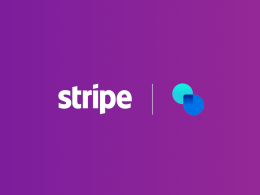In the world of cloud-based accounting software, Xero has etched a significant place for itself. As a comprehensive solution catering to small and medium-sized businesses, it provides a multitude of features, from invoicing and bill payment to bank reconciliation and robust financial reporting. It’s an excellent platform, but it may not always align with every business’s unique needs, given the diversity in size, industry-specific requirements, and growth strategies among businesses.
This is where the importance of finding the right accounting software comes into play. The ideal platform can streamline your financial processes, increase accuracy, and deliver valuable insights tailored to your business model. Although an initial investment is required, choosing suitable software can lead to substantial long-term savings by improving efficiency and reducing errors.
Our goal in this article is to introduce you to several alternatives to Xero. We have carefully selected these based on comparable features, user-friendliness, pricing, and adaptability to different business requirements. The purpose is not to downplay Xero’s effectiveness but rather to broaden your horizons, help you explore other potential solutions, and ensure that you’re using the software that best suits your unique accounting needs. Let’s delve into the diverse world of Xero alternatives and find the perfect match for your business.
Xero and its functionality
Xero, a New Zealand-based company, offers an impressive cloud-based accounting software platform catered towards small and medium-sized businesses. Its rapid ascension in popularity since its inception in 2006 can be attributed to its comprehensive suite of features, user-friendly interface, and high accessibility.
Invoicing
As a potent accounting tool, Xero empowers businesses to handle diverse financial tasks with remarkable ease. One of the essential features it offers is invoicing, where businesses can create, customize, and dispatch professional invoices. This system further enhances user convenience with recurring invoices and automated reminders for overdue payments.
Expense management
Expense management is another critical area where Xero shines. Businesses can effortlessly record and categorize expenses, thereby tracking financial outflows with accuracy. Xero further simplifies this process by allowing receipt scanning for data entry.
Reconciliation
A standout feature of Xero is its ability to perform bank reconciliation. It directly connects to your bank account, automatically imports transactions, and categorizes them, making reconciliation tasks less daunting.
Payroll
Another aspect where Xero proves its worth is in handling payroll. Its seamless integration with various payroll providers assists businesses in managing employee payments, calculating taxes, and tracking leave accruals.
Other features
Xero provides real-time financial reporting and insights, making it possible to view your cash flow, income, and expenses at a glance. In addition, businesses handling goods will find Xero’s inventory management capabilities useful, offering ways to track inventory value, manage stock levels, and receive alerts for low stock.
Businesses operating globally will benefit from Xero’s multi-currency support, making it a robust solution for international operations. Finally, for businesses on the go, Xero offers a mobile application to handle financial tasks from anywhere.

Examination of Xero’s market position – Xero as a financial management solution for small businesses
Xero’s appeal is enhanced by its robust ecosystem of integrations, supporting over 1000 business applications. This wide range of integrations allows users to extend the software’s functionality, making Xero not just an accounting tool, but a comprehensive business management solution.
Xero’s commitment to innovation and continual software updates have helped it remain competitive in the ever-evolving technology landscape. The company’s emphasis on mobility, seen through its efficient mobile app, aligns well with the growing trend of remote work and on-the-go business management.
Regionally, Xero has found substantial success in its home country of New Zealand and neighboring Australia. However, its influence has expanded globally, with a strong presence in the UK, North America, and Asia.
However, despite its strengths, Xero faces fierce competition from other prominent players in the accounting software market. Each of these competitors offers unique features and pricing models, creating a diverse and competitive landscape.
The need for Xero alternatives
While Xero is a powerful accounting tool with a comprehensive suite of features, it may not always be the perfect fit for every business. The need for Xero alternatives arises from several factors related to the unique characteristics and requirements of different businesses.
Firstly, Xero is designed with small to medium-sized businesses in mind. While it does an excellent job at meeting the needs of this demographic, larger corporations with more complex financial operations might find Xero’s capabilities insufficient. In such cases, businesses might look for more sophisticated software options that can handle higher volumes of transactions and provide more extensive financial reporting capabilities.
Secondly, the cost can be a driving factor. Xero offers several pricing tiers, but for very small businesses or freelancers, even the lowest tier might seem expensive, especially when they don’t need all the features provided. Cost-effective solutions that offer only the essentials might be a more attractive option for this group.
Thirdly, industry-specific needs can also give rise to the need for alternatives. For instance, a construction company might require project accounting features, or a nonprofit might need fund accounting capabilities – features that Xero might not offer or might not specialize in.
Lastly, Xero’s user experience, while generally praised, might not appeal to everyone. Some businesses might prefer a different interface, a simpler design, or a more intuitive user journey. Additionally, although Xero offers a broad range of integrations, there might be specific third-party applications that businesses use that do not integrate well with Xero, prompting them to explore alternatives.
Alternatives to Xero – solutions review
While Xero is an excellent tool for many, the varying needs of businesses concerning size, cost, user experience, integrations, and industry-specific requirements create a genuine need for Xero alternatives. The good news is that the accounting software market is diverse, offering a range of solutions to meet these differing needs.
When considering Xero alternatives, several robust solutions come to the forefront. Each of these solutions presents a unique blend of features, pricing, and target audience, making it important to assess your business needs carefully before choosing an alternative to Xero.
Synder – a short overview
Synder is an online financial management solution that provides automated bookkeeping for small to medium-sized businesses. Its primary features include real-time synchronization of sales and expense data, multi-currency support, automatic categorization of transactions, and reconciliation. As part of its offering, Synder integrates seamlessly with popular ecommerce platforms and payment processors making it a perfect choice for ecommerce and SaaS businesses that deal with online transactions.
Comparison of features with Xero
Both Synder and Xero offer essential bookkeeping features, but there are key differences:
- Primary function: Xero is a comprehensive accounting software solution, while Synder focuses more on ecommerce and SaaS financial data synchronization, transaction categorization, and reconciliation.
- User interface: Xero provides a more broad-based user interface with many functionalities, whereas Synder’s interface is focused on transaction management and is simpler to navigate for those specific tasks.
- Integration: While Xero provides integrations with a range of business applications, Synder excels in its seamless integration with e-commerce platforms and payment processors.
- Automation: Synder provides more advanced automation of bookkeeping tasks, specifically data synchronization and reconciliation, than Xero.
To experience Synder functionality sign-up for a weekly webinar designed especially for business owners.
QuickBooks – a short overview
QuickBooks, developed by Intuit, is a robust accounting software suite designed for small to medium-sized businesses. It’s known for its extensive features, user-friendly interface, and strong customer support. QuickBooks provides various solutions, including QuickBooks Online, QuickBooks Desktop, and QuickBooks Self-Employed, each tailored for specific business needs. Key features include invoicing, expense tracking, accounts payable and receivable, tax calculation, and comprehensive reporting.
Comparison of features with Xero
QuickBooks and Xero share many similar features, such as invoicing, expense tracking, and bank reconciliation. However, there are some differences that can make one more appealing than the other, depending on your business needs:
- User interface: While both provide intuitive, user-friendly interfaces, some users might prefer QuickBooks’ more traditional, desktop-like design over Xero’s modern, minimalist design.
- Inventory management: QuickBooks has more advanced inventory tracking capabilities, making it a better fit for businesses with complex inventory needs.
- Payroll: QuickBooks offers built-in payroll in all its plans, while Xero offers it as an additional paid feature.
- Pricing: QuickBooks typically offers lower starting prices than Xero, but as you need more advanced features or more users, the pricing can increase.
- Integration: Both platforms have a wide array of integration options. Xero integrates with over 1000 apps, while QuickBooks also offers a substantial number (over 750), albeit fewer.
Find out how to add classes in QuickBooks and automatically apply them to sales with Synder.
FreshBooks – a short overview
FreshBooks is a cloud-based accounting software primarily designed for freelancers and small businesses. Known for its time-tracking capabilities and excellent invoicing features, FreshBooks makes it easy to bill clients, record expenses, and monitor the time spent on specific projects. Its other features include payment processing, financial reporting, and expense tracking.
Comparison of features with Xero
While FreshBooks and Xero offer many of the same essential accounting features, there are key differences to note:
- User interface: FreshBooks offers a clean, user-friendly interface, known for its simplicity, which might appeal to those looking for straightforward navigation.
- Invoicing: FreshBooks has a strong emphasis on invoicing and provides more advanced customization and automation features compared to Xero.
- Time tracking: FreshBooks includes a built-in time tracker, which is especially useful for service-based businesses that bill by the hour. Xero, on the other hand, doesn’t have this feature, though you can find it amongst many integrations. Only Xero Project software offers time-tracking features.
- Payroll: While Xero offers payroll as an additional paid feature, FreshBooks does not include payroll functionality. For businesses requiring this feature, third-party integration would be necessary.
- Pricing: FreshBooks generally offers lower pricing tiers than Xero, making it a more budget-friendly option for small businesses or freelancers.
Sage – a short overview
Sage is a global provider of accounting software catering to businesses of all sizes, from startups to large corporations. Sage Business Cloud offers a range of solutions like Sage Accounting, Sage Intacct, Sage 50cloud Accounting, Sage X3, and more, each catering to specific business needs. Key features of Sage include invoicing, expense management, cash flow forecasting, inventory management, payroll, and comprehensive reporting.
Comparison of features with Xero
While both Sage and Xero provide robust accounting features, there are distinct differences between the two:
- Target audience: While Xero is mainly focused on small to medium-sized businesses, Sage offers solutions for businesses of all sizes, including larger corporations.
- Functionality: Both provide essential accounting features like invoicing, expense management, and reporting. However, Sage tends to offer more advanced features suitable for larger businesses, such as detailed cash flow forecasting and advanced inventory management.
- User interface: Xero is often praised for its modern, intuitive interface, while Sage’s user interface can be seen as more traditional and slightly less user-friendly.
- Integration: While Sage has fewer integration options than Xero, Sage’s integrations are more industry-specific, which could benefit certain businesses.
- Pricing: Sage’s pricing can be higher than Xero’s, especially for its advanced solutions, but this reflects the broader range of features and functionalities it offers.
Zoho Books – a short overview
Zoho Books is a cloud-based accounting software solution designed for small to medium-sized businesses. As part of the Zoho suite of business applications, Zoho Books seamlessly integrates with other Zoho products, providing a unified business management experience. Key features include invoicing, expense tracking, inventory management, project time tracking, and detailed financial reporting.
Comparison of features with Xero
Both Zoho Books and Xero offer a comprehensive range of accounting features, but there are several differences between the two:
- User interface: While both have clean, intuitive interfaces, some users find Zoho Books to have a slightly steeper learning curve than Xero.
- Integration: As part of the Zoho suite, Zoho Books offers seamless integration with other Zoho products, providing a unified business management experience. Xero, while offering a larger number of total integrations, may not provide as seamless an experience for users of other Zoho products.
- Project time tracking: Zoho Books includes a built-in project time tracking feature, making it a good option for service-based businesses. This feature is available only with Xero Projects.
- Pricing: Zoho Books offers a slightly lower starting price than Xero, making it a potentially more affordable option for smaller businesses or startups.
Learn about small business inventory software with our solutions review.
Wave Accounting – a short overview
Wave Accounting is a free, cloud-based accounting software specifically designed for freelancers, entrepreneurs, and small businesses. Its key features include income and expense tracking, invoicing, receipt scanning, and basic reporting. Additionally, Wave offers paid services such as payroll and payment processing.
Comparison of features with Xero
While Wave and Xero both offer essential accounting tools, there are distinct differences to consider:
- Cost: The most significant difference is that Wave’s basic accounting features are free, while Xero requires a monthly subscription. However, for features like payroll and online payment processing, Wave charges fees.
- Target audience: Wave is particularly geared towards freelancers, sole proprietors, and small businesses, while Xero caters to a broader range of business sizes, including medium-sized businesses.
- Features: Xero offers a more comprehensive suite of features than Wave. While Wave covers basic accounting tasks effectively, Xero provides more advanced functions such as inventory management and multi-currency support.
- Integration: Xero wast integrations provide more flexibility in adding functionalities. Wave, on the other hand, has limited integration options.
Choosing the right alternatives for your business
Choosing the right Xero alternative for your business is a crucial decision that can significantly impact your financial management efficiency. The first step is to clearly understand your business’s specific needs and what features are most important for your accounting operations.
Consider also the software’s ease of use and the learning curve involved. While all these alternatives strive to provide user-friendly interfaces, the perception of ‘ease of use’ can vary among users. As such, most of these platforms offer a trial period, which can be utilized to test the software before committing fully.
Customer support can often be of great help, particularly with accounting software for medium business, when it comes to solving bookkeeping and accounting issues related to software functioning. Reading reviews and testimonials can give you a good idea of customer support responsiveness and helpfulness.
The right Xero alternative will depend heavily on your business needs, size, and budget. Evaluating your requirements and taking advantage of trial periods can help you make a well-informed decision. Remember, the goal is to choose software that makes your accounting processes more efficient and helps you gain better insights into your financial situation.
Conclusion
While Xero is a comprehensive and robust accounting software, it’s not the only solution available in the market, especially when you’re looking to choose the location for your ecommerce business that requires specialized features. Depending on your specific business needs, budget, and size, other alternatives like Synder, QuickBooks, FreshBooks, Sage, Zoho Books, or Wave Accounting may provide a better fit. Each of these alternatives offers a unique set of features and strengths, which cater to different business requirements.
Choosing the right accounting software is a critical decision that directly impacts your business’s financial management. It’s essential to thoroughly assess your needs, understand the features you require, and then align them with what each software solution offers.
Remember, it’s not just about finding an alternative to Xero but finding the right accounting software that can streamline your processes, provide the necessary insights to drive business decisions, and ultimately, contribute to your business’s success. Always make use of free trials or demos, and seek user reviews and professional advice before making your final decision.










.png)